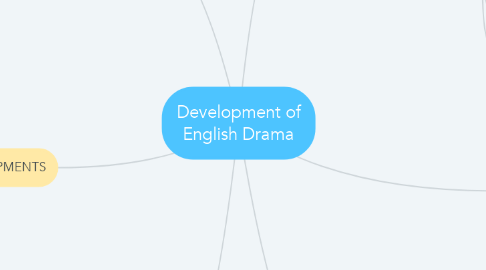Development of English Drama
by Sus Barman

1. DEVELOPMENTS
1.1. Church to marketplace
1.2. Imitation to imagination
1.3. Simple narration to figurative representation
1.4. Religious to secular
1.5. Latin to vernacular (French later English)
1.6. Narration to dialogues
1.7. Clergy to trade guilds
1.8. Instruction to entertainment
1.9. Abstract symbolism to social realism
2. ORIGIN
2.1. Inside the church
2.2. Actors: Priests
2.3. Language: Latin to Vernacular
2.4. Religious
2.5. Contents: Scriptural facts
3. REGULAR TRAGEDY & COMEDY
3.1. Influences of Greek and Roman literature
3.2. Latin imitations
3.3. 1st Comedy "Roister Doister" (1550) by Nicholas Udall
3.4. 1st Tragedy "Gorboduc" (1561) by Thomas Sackville and Thomas Norton
4. MORALITIES
4.1. Contents: Moral conflict between good and evil
4.2. Represented struggle of soul
4.3. Didactic
4.4. Characters: Personified abstractions
4.5. Introduction of "vice"
4.6. Flexibility in plot and characters
4.7. Examples: Everyman, The Castell of Perseverance
5. MIRACLES & MYSTERIES
5.1. Also called 'MYSTERIES'
5.2. Miracles: Life of saints
5.3. Mysteries: Biblical events
5.4. Conventional Theme
5.5. Example: Abraham and Issac
5.6. Setting: Outside the church
5.7. Actors: common people participated
5.8. Didactic
6. INTERLUDES
6.1. Short dramatic piece
6.2. Performed during intervals of religious dramas
6.3. Satiric tone
6.4. Developed in early 16th century
6.5. More amusing than instructions
6.6. Example: Four P's


